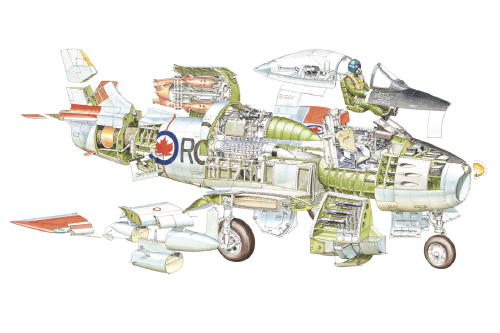Luftwaffe West: The Battle for France and the Low Countries (May 1940 - June 1940)
Luftwaffe West: The Battle for France and the Low Countries (May 1940 - June 1940)
 After the the initial shock of the invasion, the Luftwaffe quickly established air supremacy (as opposed to air superiority) as the French air arm was on the verge of collapse. The French Air Force (Armee de l'Air) had only just begun to make the majority of bomber sorties; between June 5th and 9th, over 1,815 missions, of which 518 were by bombers, were flown. The number of sorties flown declined as losses were now becoming impossible to replace. The British Royal Air Force (RAF) attempted to divert the attention of the Luftwaffe with 660 sorties flown against targets over the Dunkirk area but losses were heavy; on June 21st alone 37 Bristol Blenheims were destroyed. After June 9th, French aerial resistance virtually ceased, some surviving aircraft withdrew to French North Africa. The Luftwaffe now 'ran riot'. Its attacks were focused on the direct and indirect support of the German Army (Wehrmacht). The Luftwaffe subjected lines of resistance to ferocious assault, which then quickly collapsed under armoured attack.
After the the initial shock of the invasion, the Luftwaffe quickly established air supremacy (as opposed to air superiority) as the French air arm was on the verge of collapse. The French Air Force (Armee de l'Air) had only just begun to make the majority of bomber sorties; between June 5th and 9th, over 1,815 missions, of which 518 were by bombers, were flown. The number of sorties flown declined as losses were now becoming impossible to replace. The British Royal Air Force (RAF) attempted to divert the attention of the Luftwaffe with 660 sorties flown against targets over the Dunkirk area but losses were heavy; on June 21st alone 37 Bristol Blenheims were destroyed. After June 9th, French aerial resistance virtually ceased, some surviving aircraft withdrew to French North Africa. The Luftwaffe now 'ran riot'. Its attacks were focused on the direct and indirect support of the German Army (Wehrmacht). The Luftwaffe subjected lines of resistance to ferocious assault, which then quickly collapsed under armoured attack.
The Luftwaffe virtually destroyed the Armee de l'Air during the campaign and inflicted heavy losses on the RAF contingent that was deployed. It is estimated the French lost 1,274 aircraft during the campaign, the British suffered losses of 959 (477 fighters). The battle for France had cost the Luftwaffe 28% of its front line strength, some 1,428 aircraft destroyed (1,129 to enemy action, 299 in accidents). A further 488 were damaged (225 to enemy action, 263 in accidents), making a total of 36% of the Luftwaffe strength negatively affected. The campaign had been a spectacular success for the German air-arm.
|
|
|





 After the the initial shock of the invasion, the Luftwaffe quickly established air supremacy (as opposed to air superiority) as the French air arm was on the verge of collapse. The French Air Force (Armee de l'Air) had only just begun to make the majority of bomber sorties; between June 5th and 9th, over 1,815 missions, of which 518 were by bombers, were flown. The number of sorties flown declined as losses were now becoming impossible to replace. The British Royal Air Force (RAF) attempted to divert the attention of the Luftwaffe with 660 sorties flown against targets over the Dunkirk area but losses were heavy; on June 21st alone 37 Bristol Blenheims were destroyed. After June 9th, French aerial resistance virtually ceased, some surviving aircraft withdrew to French North Africa. The Luftwaffe now 'ran riot'. Its attacks were focused on the direct and indirect support of the German Army (Wehrmacht). The Luftwaffe subjected lines of resistance to ferocious assault, which then quickly collapsed under armoured attack.
After the the initial shock of the invasion, the Luftwaffe quickly established air supremacy (as opposed to air superiority) as the French air arm was on the verge of collapse. The French Air Force (Armee de l'Air) had only just begun to make the majority of bomber sorties; between June 5th and 9th, over 1,815 missions, of which 518 were by bombers, were flown. The number of sorties flown declined as losses were now becoming impossible to replace. The British Royal Air Force (RAF) attempted to divert the attention of the Luftwaffe with 660 sorties flown against targets over the Dunkirk area but losses were heavy; on June 21st alone 37 Bristol Blenheims were destroyed. After June 9th, French aerial resistance virtually ceased, some surviving aircraft withdrew to French North Africa. The Luftwaffe now 'ran riot'. Its attacks were focused on the direct and indirect support of the German Army (Wehrmacht). The Luftwaffe subjected lines of resistance to ferocious assault, which then quickly collapsed under armoured attack.